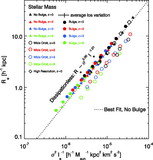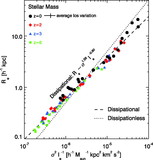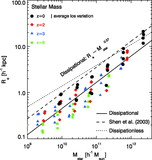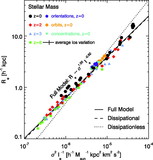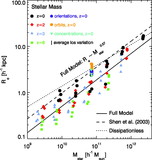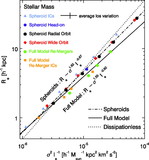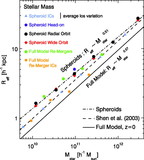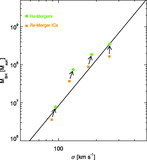Image Details
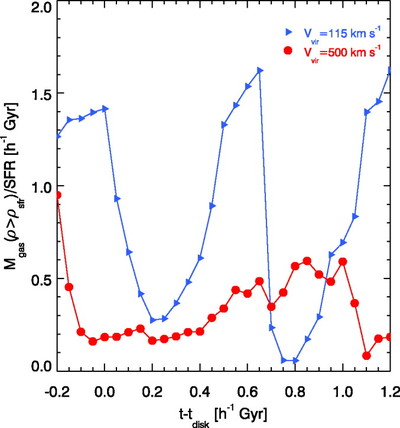
Caption: Fig. 18.
Consumption timescale of star‐forming gas in ﹩V_{\mathrm{vir}\,}=115﹩ km s−1 (blue triangles) and ﹩V_{\mathrm{vir}\,}=500﹩ km s−1 (red circles) progenitor mergers measured for simulations with gas fraction ﹩f_{\mathrm{gas}\,}=0.4﹩ and equation‐of‐state parameter ﹩q_{\mathrm{EOS}\,}=0.25﹩. The consumption timescale is plotted as a function of time ﹩t-t_{\mathrm{disk}\,}﹩ since the disks first interact and reflects the ratio of ﹩M_{\mathrm{gas}\,}( \rho > \rho _{\mathrm{SFR}\,}) / ( dM_{\star }/ dt) ﹩ during the simulation for gas above the density threshold for star formation. The cold gas in the massive system that is not collisionally heated by the first pericentric passage into the halo (see Fig. 17) is always efficiently converted into stars. In smaller systems, the cold gas in the system is efficiently converted into stars only during times of interactions, such as pericentric passage (﹩t-t_{\mathrm{disk}\,}=0.1{\mbox{--}} 0.2﹩ h−1 Gyr) or final coalescence (﹩t-t_{\mathrm{disk}\,}\approx 0.9﹩ h−1 Gyr), but is consumed on long timescales otherwise.
Copyright and Terms & Conditions
© 2006. The American Astronomical Society. All rights reserved. Printed in U.S.A.


